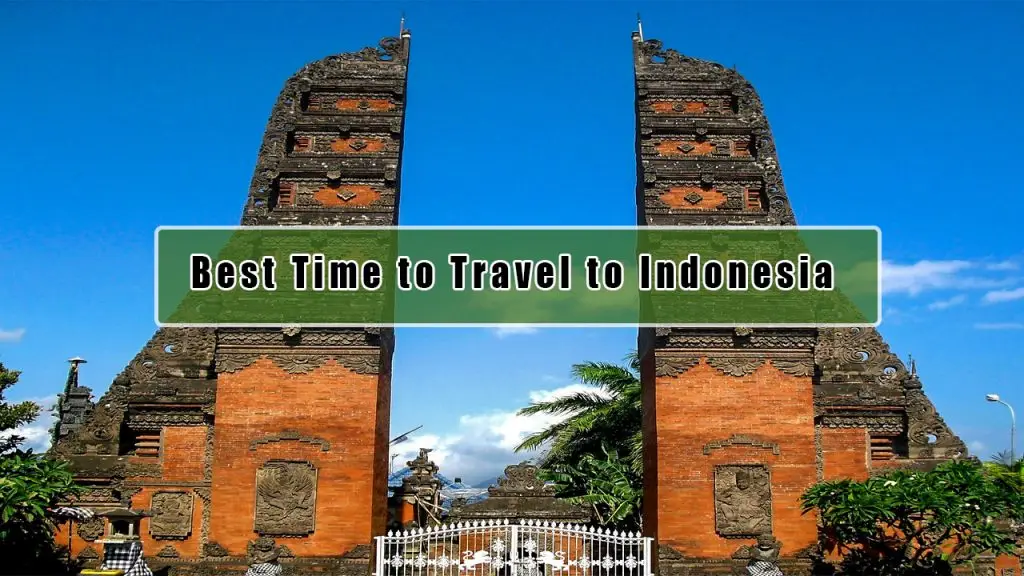1. When is the best time to travel to Indonesia?
For tourists from all over the world, Indonesia, an archipelago of more than 17,000 islands, is the ideal location. There is something for every kind of traveler in Indonesia, with its breathtaking beaches, energetic culture, verdant jungles, and abundant biodiversity. Indonesia offers everything one might want, be it leisure on immaculate beaches, an in-depth exploration of distinctive cultural experiences, or adventure in the shape of climbing and surfing. But knowing when to visit Indonesia is essential if you want to get the most out of your trip.
The ideal timing of your trip can greatly improve your experience by enabling you to take advantage of the nation’s natural beauty and activities. The monsoon rains and the brightest festivities can be avoided, but it can still make a big difference to schedule your trip around Indonesia’s climate and seasonal events.
In this article, we’ll walk you through all you need to know about the best time to travel to Indonesia. We’ll explore the nation’s climate trends, weigh the benefits and drawbacks of visiting at various times of the year, and provide advice on how to tailor your vacation to your personal interests. We’ll assist you in selecting the ideal time to visit this captivating location, whether your goals are to take in the sun, explore underwater environments, or become fully immersed in local customs.
Read about the Costa Rica travel itinerary
2. Understanding the Climate of Indonesia
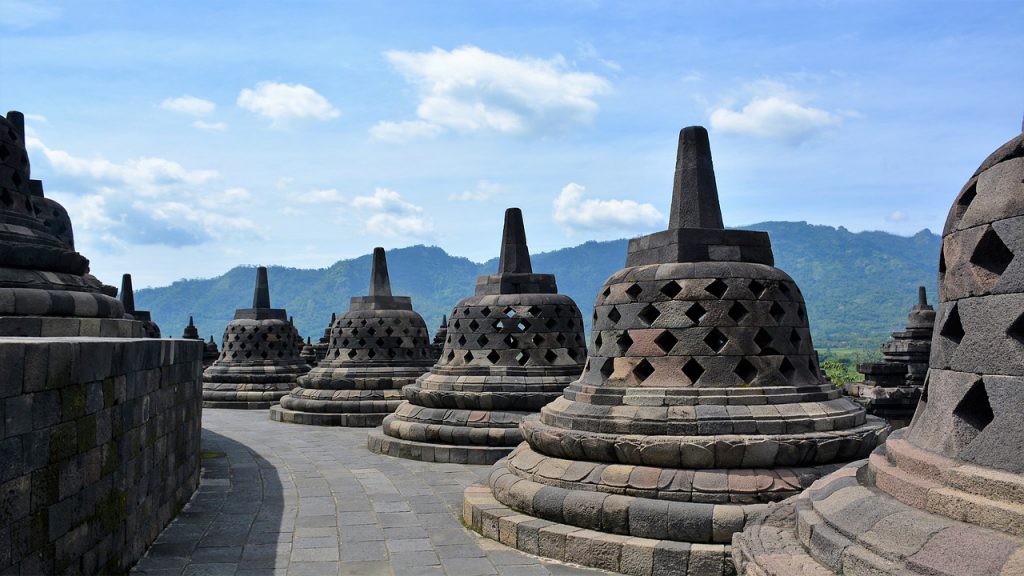
With consistently warm temperatures and high humidity levels throughout the year, Indonesia is known for its tropical environment. Due to its equator location, Indonesia has a generally steady climate, with average highs and lows of 26°C (79°F) to 28°F (82°F) in most areas. It is therefore a year-round destination, but you can choose the best time to visit by being aware of the subtleties of its weather patterns.
Wet (Monsoon) and Dry are the Two Main Seasons
The wet season and the dry season are the two main seasons that characterize Indonesia’s climate. Depending on the kinds of activities you choose to engage in and the areas you want to visit, each season offers a unique experience.
April to October is the dry season.
The best time to travel to Indonesia is usually thought to be during the dry season, which runs from April to October. The weather is mostly sunny and dry during these months, with very little rain. Hiking, surfing, and discovering the breathtaking beaches of the nation are all made possible by the favorable weather throughout this season.
Advantages of the Dry Season:
- Sunny days with clear skies are ideal for sightseeing and photography.
- It is more comfortable to engage in physical activity when the humidity is lower.
- Perfect visibility for water sports like snorkeling and diving.
- There are many festivals and other cultural events going on, offering a lively cultural experience.
During the dry season, popular places like Bali, Java, and Lombok flourish, attracting tourists from all over the world with their stunning scenery and exciting celebrations.
November to March are the wet seasons.
The wet season lasts from November to March and is characterized by frequent rain and elevated humidity. Though the prospect of rain may put off some tourists, the wet season has advantages and charm all its own.
What to Expect In the Rainy Season
- Although they are frequently brief and happen in the late afternoon or evening, rain showers can be rather strong.
- The scenery gets verdant and lush, showcasing the most magnificent rivers and waterfalls.
- Reduced tourism results in less crowded sites and cheaper accommodation and activity costs.
Indonesia can be more peaceful and personal during the wet season if you’re ready to brave the rain. At this time of year, areas like Sumatra and Kalimantan, which are renowned for their abundant rainforests and animals, are especially captivating.
Read about the best travel destinations in december
Annual Variations in Temperature and Weather
Temperatures in Indonesia are mostly constant throughout the year, despite variations in rainfall throughout different seasons. Higher heights, like the highlands of Bali and Java, offer cooler temperatures, particularly in the evenings, whereas coastal areas and lowlands typically see warmer temperatures.
Average Temperatures:
- Seaside areas: from 26°C (79°F) to 28°C (82°F)
- Highland areas: 18°C (64°F) to 24°C (75°F)
All year round, there is a lot of humidity, although for those who are not used to tropical weather, the dry season has somewhat less humidity.
You can more effectively arrange your trip to suit your interests and the experiences you’re looking for by being aware of Indonesia’s climate and the features of its dry and wet seasons. Indonesia has the ideal season for you, whether you like bright beach days, strenuous excursions, or exploring beautiful jungles.
3. The Best Season for most travelers is during the Dry Season
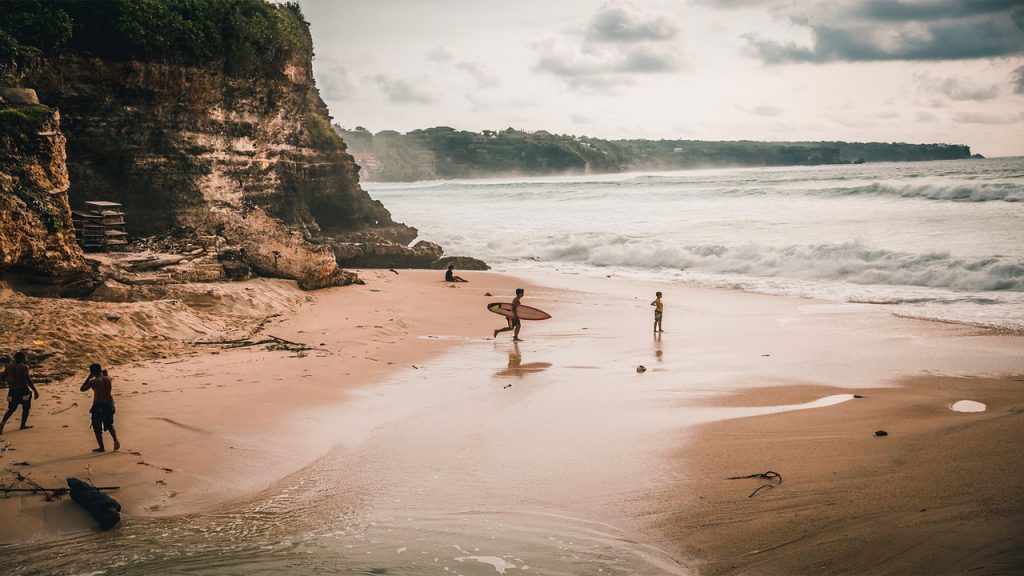
Time Period: April–October
Most people agree that April through October, during Indonesia’s dry season, is the ideal time to visit this tropical haven. Travelers may anticipate dependably excellent weather during these months, which makes it the perfect time to take in all that Indonesia has to offer in terms of attractions.
Traveling During the Dry Season Has Its Advantages
- Sunny weather and clear skies
The abundance of bright days and clear skies during the dry season is one of the most alluring travel features. It’s the ideal weather for touring and outdoor activities, with less humidity and rain. The dry season offers the best opportunities to take in Indonesia’s natural and cultural treasures, whether you’re hiking through lush landscapes, relaxing on a pristine beach, or touring historic temples.
- Perfect for Beach Vacations and Outdoor Activities
The best time to enjoy a variety of outdoor activities is during the dry season because of the excellent weather. The following are some of the best things to do during this time:
- Trekking: From the lush rainforests of Sumatra to the volcanic peaks of Mount Batur in Bali, Indonesia’s varied topography provides a wealth of trekking options. Hikes with clear pathways and breathtaking views are safer and more pleasurable during the dry season.
- Surfing: The best waves occur during the dry season, which makes Indonesia a popular surfing destination worldwide. Surfers from all over the world go to well-known surf locations like Kuta Beach in Lombok and Uluwatu in Bali.
- Snorkeling and Diving: The dry season is ideal for snorkeling and diving because of the great underwater clarity it provides. See colorful coral reefs and a variety of marine life in places like Raja Ampat and the Gili Islands.
Read about the best travel agency in Dubai
Popular Destinations and Activities
- Bali
One of Indonesia’s best-known travel destinations is Bali, which is well-known for its stunning beaches, lively nightlife, and rich culture. In the dry season, guests can take advantage of:
- Beach Days: Unwind on Bali’s gorgeous beaches, like Kuta, Seminyak, and Nusa Dua, where the warm sun and clear skies provide for the ideal beach experience.
- Cultural Festivals: Attend one of Bali’s many festivals to learn about the island’s rich cultural legacy. June and July saw the Bali Arts Festival, which features traditional crafts, music, and dancing.
- Nature Adventures: Take in the lush scenery of Bali by hiking through Ubud’s rice terraces or exploring North Bali’s breathtaking waterfalls.
- Jakarta
Jakarta, the vibrant capital of Indonesia, offers a fusion of modernism and tradition. Enjoy these throughout the dry season:
- City Tours: See the historical sites of Jakarta, including the Jakarta Cathedral and the National Monument (Monas). The nice weather adds to the comfort of exploring the city.
- Dining and Shopping: Savor a variety of delectable cuisines and take in Jakarta’s thriving retail scene. Try the street food or visit the well-known marketplaces and shopping centers.
- Yogyakarta
Yogyakarta, sometimes called Indonesia’s cultural center, is a place that just must be seen. In the dry season, investigate:
- Historical Sites: Take a tour of the well-known Borobudur and Prambanan temples, where the lack of rain permits unhindered investigation and breathtaking picture ops.
- Local Arts and Crafts: Explore the vibrant marketplaces and workshops of Yogyakarta to learn about traditional Javanese arts and crafts.
For most people, the ideal time to visit Indonesia is definitely during the dry season, which runs from April to October. It’s the best time of year to visit well-known locations like Bali, Jakarta, and Yogyakarta because of the clear skies, sunny weather, and wonderful circumstances for outdoor activities and beach trips. The dry season in Indonesia offers a unique experience for anyone interested in adventure, culture, or just lounging on stunning beaches.
Read about the romantic vacation spots in Ohio
4. The Rainy Season: An Unforgettable Adventure
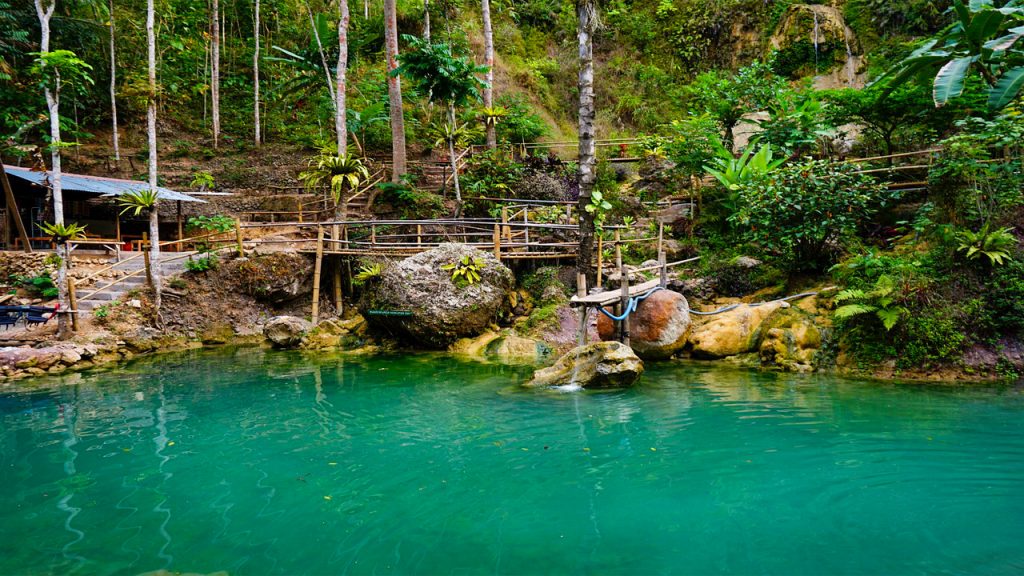
Time Period: November–March
Indonesia’s wet season, which runs from November to March, gives this tropical archipelago a distinct appeal. While the prospect of rain may put off some tourists, those who go during the wet season will have an unforgettable and fulfilling experience.
What to Expect: Rain Showers and Humidity
Rain showers are common and frequently strong throughout the wet season; they typically take place in the late afternoon or evening. Even though these downpours are usually brief, they can be rather strong, giving you plenty of daylight for exploring. Because of the higher humidity during this time, the rich and colorful landscapes that flourish from the additional rainfall are made possible.
Benefits of Traveling in the Rainy Season
- Less Travelers and Cheaper Rates
The lower number of tourists is one of the main advantages of visiting Indonesia in the rainy season. Well-liked locations are less crowded, making for a more tranquil and personal encounter. Budget-conscious travelers may find this to be a more affordable option because of the reduced rates that many hotels, resorts, and tour companies provide at this time.
- Vibrant Flora and Lush Landscapes
Indonesia’s surroundings become a green paradise during the wet season. Huge amounts of rainfall nourish the flora, resulting in robust plant life and lush vegetation. Rivers run vigorously, rice terraces gleam with new growth, and waterfalls are at their most magnificent. The wet season is a visual feast for photographers and lovers of the outdoors.
Places and Things to Do During the Rainy Season
- Visiting Temples
There are many temples in Indonesia that are worth visiting in any weather. These historic locations take on a mysterious quality during the rainy season as rain and mist compound their natural beauty. Among the notable temples to visit are:
- Borobudur: Located in Central Java, this is the largest Buddhist temple in the world. Rain and mist during the wet season provide an ethereal ambiance ideal for introspection.
- Prambanan: This magnificent Hindu temple complex is located just outside of Yogyakarta, and the surrounding lush, green scenery is even more captivating during the rainy season.
- Pura Ulun Danu Bratan is a charming temple encircled by tranquil waters and frequently covered in mist on the beaches of Bali’s Lake Bratan.
- Indoor Marketplaces
Discovering indoor marketplaces is a great opportunity to experience Indonesian culture without getting wet. These vibrant markets are fantastic locations to shop for souvenirs, try local cuisine, and take in the lively atmosphere. They also provide an insight into the daily lives of the locals. Among the noteworthy markets are:
- Bali’s biggest traditional market, Pasar Badung, has everything from fresh food to locally made handicrafts.
- Yogyakarta’s Pasar Beringharjo is a historic market celebrated for its batik fabrics, regional delicacies, and distinctive mementos.
- One of the biggest textile markets in Southeast Asia, Tanah Abang Market in Jakarta has an extensive selection of textiles and apparel.
- Spa Getaways
The best time of year to indulge in wellness and relaxation pursuits is during the rainy season. There are several spa getaways in Indonesia that offer a tranquil get-away from the rain. Treat yourself to traditional therapies, including yoga classes, herbal baths, and Balinese massages. Several well-liked spa locations include:
- Ubud, Bali: With a reputation for wellbeing, Ubud has a range of spas surrounded by verdant forests and peaceful rice fields.
- Nusa Dua, Bali: Luxurious resorts in this region provide top-notch spa services with views of the ocean, making them ideal for a restorative getaway.
- Bandung, West Java: With its naturally occurring hot springs and temperate environment, Bandung is a great place to indulge in spa and wellness treatments.
Traveling in Indonesia during the wet season, which runs from November to March, is a memorable and rewarding experience. It’s the best time of year for those looking for peace and natural beauty because there are fewer tourists, cheaper pricing, and beautiful scenery. Traveling to temples, exploring indoor markets, and enjoying spa retreats are all great ways to make the most of your stay, no matter the weather. During Indonesia’s rainy season, embrace the rain and uncover the country’s hidden treasures.
Read about the best beach vacations for families
5. Shoulder Seasons: Balancing Weather and Crowds
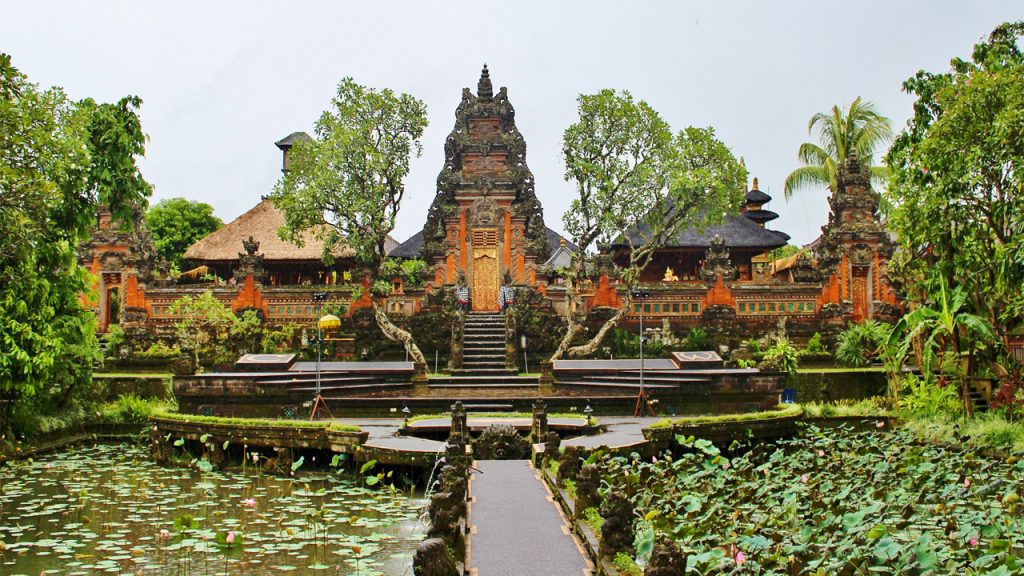
Transitional Times: October–November and March–April
In Indonesia, the shoulder seasons, which fall between March and April and October and November, provide a nice balance between good weather and moderate crowds. The transition between the dry and wet seasons occurs during these months, offering a rare chance to enjoy the best of both worlds.
Benefits and Drawbacks of Traveling in the Off-Season
Advantages
Mild Weather and Fewer People
The mild weather is one of the biggest benefits of traveling during the shoulder seasons. The weather is usually milder during these times, with sunny days interspersed with sporadic downpours. The usual temperature range is 26°C (79°F) to 28°C (82°F), which is comfortable for a variety of activities.
- Less extreme heat: Due to the transitional weather, sporadic showers and cooler breezes frequently relieve the extreme heat of the peak dry season, creating a comfortable exploration environment.
- Fewer Tourists: Compared to the peak dry season, shoulder seasons see a decrease in the number of tourists. This means that there will be fewer tourists at the sites, more accommodation options, and a more laid-back vacation. You can visit well-known locations without the commotion of sizable crowds.
There Could occasionally be Rain
Even while there are lots of advantages to the shoulder seasons, it’s still vital to be ready for the odd downpour. These rains normally fall in the late afternoon or evening, and they are usually light and fleeting. They add to Indonesia’s famously lush scenery and offer a cool respite from the heat.
Juggling Activities and Places
There is no shortage of things to do and places to see during the shoulder seasons. Here are a few standouts:
- Examining Outdoor Activities and Nature
- Hiking and Trekking: The shoulder season’s milder, cooler weather is ideal for hiking and trekking. The fresh vegetation from the recent rains often improves the scenery, and the trails are less muddy than during the wet season. Think of taking a hike up Mount Rinjani in Lombok or visiting Ubud’s rice terraces.
- Beach Visits: There are still lots of possibilities to take in Indonesia’s stunning coasts, even though the beaches might not be as constantly sunny as they are during the peak dry season. Less people means more room on beaches like Bali’s Nusa Dua or the Gili Islands to unwind and enjoy the sun.
- Cultural Experiences
- Local Festivals: A number of local festivals and cultural events frequently take place during the shoulder seasons. These offer a fantastic chance to fully experience Indonesian culture. For example, you may be able to attend Nyepi, the Balinese Day of Silence, which is a very special and contemplative cultural occasion, in March or April.
- Temple Visits: When there are fewer visitors around, it’s more peaceful and contemplative to visit famous temples like Prambanan, Borobudur, and Pura Besakih. These historic locations may have a mysterious atmosphere from the sporadic downpours.
- Urban Investigation
- City Tours: There are many cultural, historical, and gastronomic experiences to be had in cities like Bandung, Yogyakarta, and Jakarta. The shoulder seasons offer fewer crowds and pleasant weather for strolling excursions, making them great times to visit major urban hubs.
- Dining and Shopping: Take advantage of the decline in tourists visiting neighborhood eateries, boutique stores, and markets. Enjoy local cuisine and purchase one-of-a-kind mementos without having to worry about pushing through throngs of people.
In Indonesia, the shoulder seasons of March–April and October–November offer the perfect mix of mild weather and fewer tourists, making for a more laid-back and pleasurable vacation. Although there is a chance of rain occasionally, the advantages greatly exceed this small drawback. The shoulder seasons offer an ideal chance to discover this fascinating and varied nation, whether you’re trekking through verdant scenery, relaxing on peaceful beaches, or exploring Indonesia’s rich cultural legacy.
Read about the best places to visit in India
6. Ideal Timing for Particular Interests
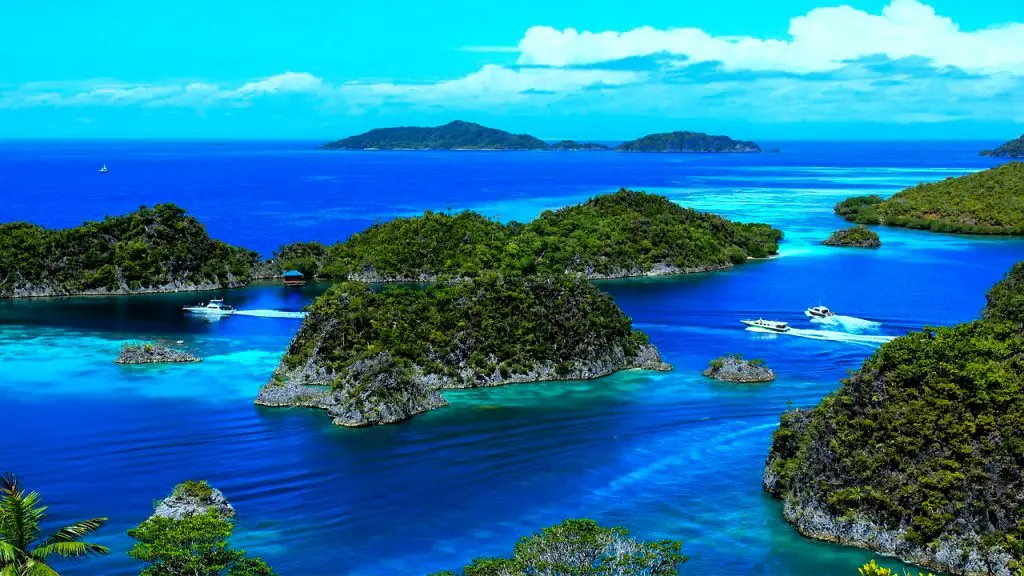
Due to its varied topography and temperature, Indonesia offers a variety of year-round sports. But some seasons are better than others for certain activities like snorkeling, diving, surfing, and attending cultural festivals. Knowing when these activities are at their most enjoyable will help you organize a trip that ideally satisfies your interests.
Surfing: Best Times and Places
With waves that are recognized across the world and a range of breaks appropriate for surfers of all abilities, Indonesia is a top surfing destination. The ideal time to surf is highly dependent on the location.
- Bali
- Optimal Months: April to October.
- Top Locations: Canggu, Uluwatu, Padang Padang, and Kuta Beach
- Conditions: Consistent swell and good breezes provide perfect surfing conditions during Bali’s dry season. Canggu and Kuta Beach are excellent for novices, although Uluwatu and Padang Padang are well-known for their difficult waves.
- Lombok
- Perfect Months: April to September
- Highlights: Gerupuk, Kuta Lombok, and Desert Point
- Conditions: In Lombok, the dry season also produces fantastic waves. Experienced surfers love Desert Point because of its legendary long, barreling left-handers.
- Islands of Mentawai
- The best months are from March to November.
- Top Picks: Rifles, Macaronis, and HTs (Hollow Trees)
- Conditions: With regular swell and a selection of top-notch breaks, the Mentawai Islands are regarded as a surfer’s paradise. The greatest conditions are available during the peak season, which draws surfers from all over the world.
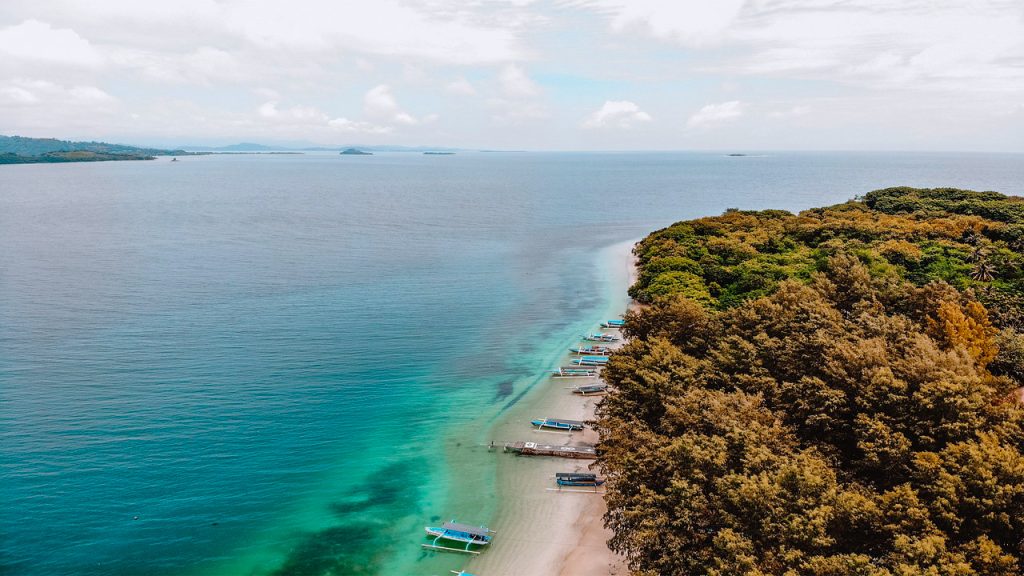
Snorkeling and Diving: The Best Underwater Views
Indonesia is a renowned diving and snorkeling destination because of its clear waters and rich marine species. Each region has different ideal times for underwater activities.
- Bali
- Perfect Months: March through November
- Top Picks: Tulamben, Amed, and Nusa Penida
- Conditions: Clear, calm waters and good visibility are hallmarks of the dry season, which makes it ideal for seeing colorful coral reefs and marine creatures like sunfish and manta rays.
- Komodo National Park
- Perfect Months: March through December
- High Points: Crystal Rock, Castle Rock, and Batu Bolong
- Conditions: Exciting diving locations can be found in Komodo National Park, which is well-known for its powerful currents and abundant biodiversity. The dry season offers the best visibility and conditions, with chances to spot colorful reef species, rays, and sharks.
- Raja Ampat
- Optimal Months: April through October
- Top Picks: Manta Sandy, Cape Kri, and Blue Magic
- Conditions: Known for its breathtaking coral reefs and remarkable marine variety, Raja Ampat is a diving haven. The best underwater visibility, as well as the opportunity to witness manta rays and colorful coral gardens, which are available during this region’s rainy season, which falls during the dry season in other regions of Indonesia.
Cultural Immersion: Significant Celebrations and Occasions
Indonesia celebrates its rich cultural legacy all year with a number of festivals and events. Arranging your visit to take place on these occasions can offer profound cultural understanding and unique experiences.
- Nyepi
- When: March (the precise date varies)
- Where: Bali
- Details: The Balinese New Year is celebrated on Nyepi, the Day of Silence. The entire island comes to a standstill for this unusual and solemn ceremony. We spend the day in contemplation, meditation, and quiet. Large papier-mâché monsters are a feature of the colorful Ogoh-Ogoh parades that take place the night before Nyepi.
- Galungan
- When: Using the Bengali Pawukon calendar, every 210 days
- Where: Bali
- Details: The triumph of good (dharma) over evil (adharma) is celebrated on Galungan. Featuring elaborately adorned bamboo poles (penjor) lining the streets, unique ceremonies, and traditional dances, it is one of the most significant Hindu festivals in Bali.
- Waisak (Vesak)
- When: May (actual date may differ)
- Where: Central Java, Borobudur
- Details: Waisak, sometimes referred to as Vesak, honors the Buddha’s conception, realization, and demise. Thousands of Buddhists assemble at Borobudur Temple for ceremonies, meditation, and the releasing of lanterns into the night sky as part of the main celebration.
- Jakarta jazz Festival International Java
- Date: March
- Where: Jakarta
- Details: One of the biggest jazz festivals globally, it draws both local and international musicians with a wide variety of performances spread over several stages.
You may make sure that your vacation to Indonesia not only meets but surpasses your expectations by scheduling your travel around these ideal periods for surfing, diving, snorkeling, and cultural events. Whether you want to dive into underwater marvels, ride the ideal wave, or take part in colorful cultural festivities, Indonesia has something really unique to offer every kind of tourist.
Learn about the top places to visit in Canada
7. Indonesia’s Regional Variations
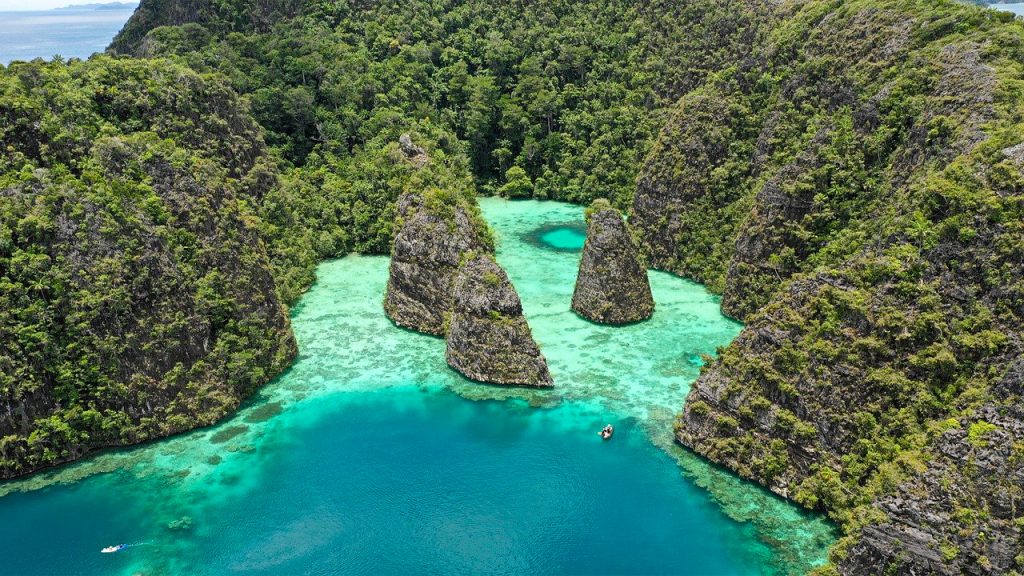
Over 17,000 islands make up Indonesia’s enormous archipelago, and each has its own distinct environment, top attractions, and ideal seasons to visit. By being aware of these regional differences, you may make travel arrangements that will allow you to experience this varied nation to the fullest.
1. Java
Weather and Ideal Times to Travel
- Climate: Java has a tropical climate with two distinct seasons: April to October and November to March. In general, Java’s eastern and central regions are drier than its western ones.
- Best Travel Times: April to October, during the dry season, is the best time to visit Java because of the pleasant weather that is suitable for outdoor activities and sightseeing.
Unique Activities and Attractions
Discover Indonesia’s thriving capital city, Jakarta, which is well-known for its historical landmarks, exciting nightlife, and retail areas.
- Yogyakarta: Take a tour of Java’s cultural center, which is home to the stunning Borobudur and Prambanan temples as well as a variety of traditional crafts and artwork.
- Bromo-Tengger-Semeru National Park: Take a hike to the magnificent Mount Bromo, an active volcano with views of the sunrise that are simply amazing.
2. Bali
Weather and Ideal Times to Travel
- Climate: November to March is the wet season in Bali’s tropical climate, whereas April to October is the dry season. Areas near the coast are typically colder and drier.
- Optimal Travel Times: For beach vacations, outdoor pursuits, and cultural immersion, April through October, during the dry season, is the ideal time to visit Bali.
Distinctive Activities and Attractions
- Ubud: Explore Bali’s cultural and artistic hub, renowned for its temples, verdant rice terraces, and spa retreats.
- Beaches: Take advantage of the stunning beaches in Seminyak, Kuta, and Nusa Dua, which are excellent for water sports, surfing, and tanning.
- Cultural Festivals: Attend festivals like Nyepi and Galungan to get a taste of Bali’s rich cultural legacy.
3. Sumatra
Weather and Ideal Times to Travel
- Climate: Year-round high humidity and substantial rainfall characterize Sumatra’s equatorial climate. Wetter than the east shore is the west coast.
- Optimal Travel Times: With little rainfall, May through September is the ideal time of year to visit Sumatra during the dry season.
Distinctive Activities and Attractions
- Lake Toba: Discover the world’s largest volcanic lake, offering boating, hiking, and traditional Batak village visits.
- Orangutan Sanctuaries: To witness orangutans in their native habitat, go to Bukit Lawang and Gunung Leuser National Park.
- Aceh: Take in Aceh’s distinct culture and its breathtaking beaches, ancient mosques, and mouthwatering cuisine.
4. Kalimantan
Weather and Ideal Times to Travel
- Climate: With year-round high rainfall that peaks in November and March, Kalimantan has a tropical rainforest climate.
- Optimal Travel Periods: June through September, which are comparatively drier months, are the ideal times to travel.
Distinctive Activities and Attractions
- Tanjung Puting National Park: See wildlife in its native habitat, including proboscis monkeys and orangutans, while taking a river boat.
- Derawan Islands: In this isolated archipelago, take advantage of immaculate beaches, diving, and snorkeling.
- Dayak Culture: Discover the customs and distinctive way of life of the native Dayak people.
5. Sulawesi
Weather and Ideal Times to Travel
- Climate: Sulawesi has a varied climate depending on the location, with a generally tropical climate and distinct dry (April to October) and wet (November to March) seasons.
- Optimal Travel Times: The ideal time to visit, providing ideal weather for outdoor activities, is during the dry season, which runs from April to October.
Distinctive Activities and Attractions
- Tana Toraja: Amidst picturesque hills, experience the distinct culture and intricate funeral customs of the Torajan people.
- Bunaken National Park: Immerse yourself in one of the top marine parks globally, renowned for its breathtaking coral reefs and abundant marine life.
- Manado: Discover the energetic metropolis of Manado, which is home to stunning diving locations and a plethora of culinary customs.
6. Papua
Weather and Ideal Times to Travel
- Climate: Papua experiences year-round high rainfall due to its tropical rainforest climate. In general, the coast receives more rainfall than the highlands.
- Optimal Travel Periods: May through October, when it’s drier, is the ideal time to explore Papua.
Distinctive Activities and Attractions
- Raja Ampat: This marine wonderland, renowned for its amazing biodiversity, offers world-class diving and snorkeling.
- Baliem Valley: Hike through the isolated highlands with breathtaking views of the mountains and the Dani people, who live there natively.
Discover the UNESCO World Heritage Site, Lorentz National Park, which is home to a variety of wildlife, rainforests, and glaciers.
A region’s distinct climate and cultural legacy impact the experiences and attractions that each part of Indonesia has to offer. Make the most of your Indonesian adventure by knowing the ideal travel dates and regional variations, whether you’re visiting the temples of Java, the beaches of Bali, the rainforests of Sumatra, the wildlife of Kalimantan, the cultural diversity of Sulawesi, or the marine wonders of Papua.
Read about the best place to visit in california
8. Planning a Trip to Indonesia: A Few Tips
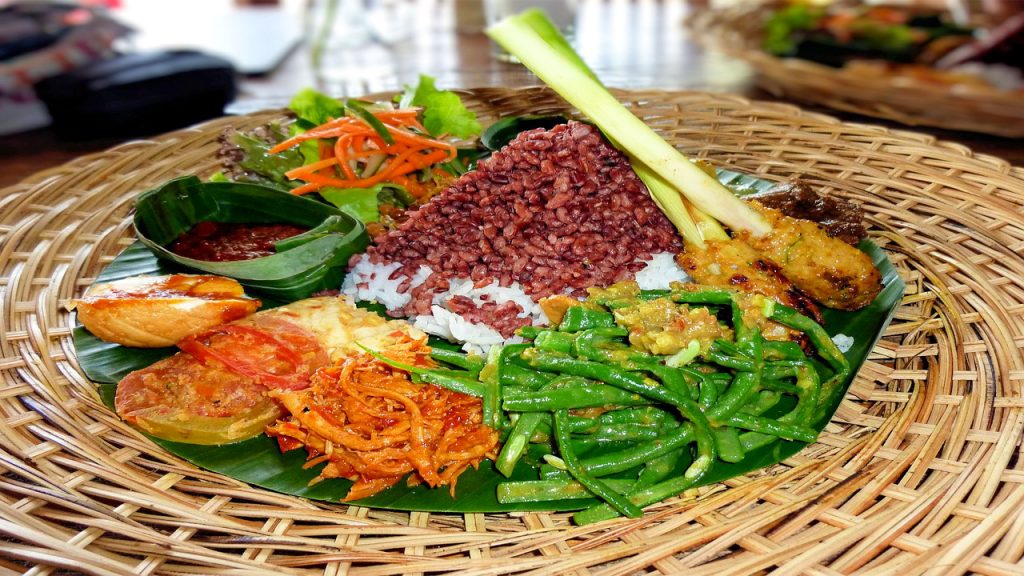
When organizing a vacation to Indonesia, there are a number of things to take into account, such as what to bring for each season, where to stay, and how to deal with local customs. The following are crucial pointers to assist you in organizing a seamless and joyful trip:
Season-specific Packing Essentials
Because Indonesia’s climate varies greatly between its regions and seasons, it’s important to bring the right clothes and necessities.
April to October, the dry season
- Airy and lightweight apparel, such as shorts and cotton shirts.
- To defend against the sun, wear a wide-brimmed hat, sunglasses, and sunscreen.
- Swimwear for water sports and trips to the beach.
- Sturdy sandals or hiking shoes are recommended for visiting temples and taking natural walks.
November to March are the wet season
- Quick-dry or waterproof apparel; this includes an umbrella or rain jacket.
- Long-sleeved shirts and pants to protect against insects, as well as insect repellant.
- Waterproof covers or bags for valuables, such as electronics.
- Shoes with excellent grip on slick terrain and closed toes.
Overall Advice on Packing
- A portable charger and travel adaptor for gadgets.
- Prescription drugs and a first aid kit, along with medications.
- A lightweight scarf or shawl to cover your legs and shoulders when entering mosques or temples.
Making Advance Reservations for Travel and Accommodation
- Location: Indonesia has a variety of choices for accommodation, ranging from affordable guesthouses to opulent resorts. Popular travel locations such as Bali and Jakarta tend to sell out far in advance during peak seasons (the dry season). To guarantee your ideal stay, it is advisable to make reservations for lodging in advance.
- Flights: Indonesian flights often fill up quickly, especially during the busiest travel seasons. Not only does booking flights in advance guarantee availability, but it may also result in lower costs. For the best offers, think about making your reservations directly with airlines or using travel comparison websites.
Handling Local Customs and Transportation
Transportation: There are different regional transportation alternatives in Indonesia. Taxis, ride-sharing applications, and motorbike taxis (ojeks) are all widespread in big cities like Jakarta and Bali. Think about long-distance buses, trains, or domestic planes for intercity travel. Especially during holidays and busy seasons, schedule your journeys and purchase your tickets in advance.
Local Customs: In Indonesia, observance of regional traditions and customs is crucial. Among the general customs to be aware of are:
- When you visit places of worship, dress modestly. Wrap your knees and shoulders.
- Take off your shoes before going into a house of worship or someone else’s.
- Give and receive objects with your right hand only; the left hand is regarded as filthy.
- Before taking a picture of someone, always get their consent, especially in a traditional or rural setting.
Extra Advice:
- Health and Safety: Drink bottled water and stay hydrated. Think about purchasing travel insurance that includes cancellation and emergency medical coverage.
- Money and Transactions: The Indonesian Rupiah (IDR) is the country’s currency. Keep cash on hand for marketplaces and little purchases. While smaller stores and vendors might prefer cash, credit cards are generally accepted in hotels, restaurants, and other larger venues.
The official language of Indonesia is Bahasa Indonesia, although English is commonly spoken in tourist areas. Acquiring a few fundamental Indonesian phrases might improve your conversations with locals and trip experience.
You can make sure that your vacation to Indonesia is fulfilling and unforgettable by planning ahead for various seasons, making reservations for lodging and airfare, being aware of your transportation options, and showing respect for local customs. Whether you’re taking in exciting cultural events, unwinding on immaculate beaches, or touring historic temples, these pointers will help you get the most out of your trip to Indonesia.
Read about the best places to visit in Thailand
9. In summary
Arranging a vacation to Indonesia presents a multitude of chances to discover its varied topography, abundant cultural legacy, and lively customs. You can maximize your trip to this fascinating archipelago by learning the ideal dates to visit based on your preferences and interests.
Summary of the Ideal Periods to Visit Indonesia
The climate of Indonesia varies geographically, providing diverse seasons for varied travel experiences.
- Dry Season (April to October): Sunny, clear weather is ideal for outdoor activities, beach vacations, and touring cultural sites.
- Wet Season (November to March): Despite sporadic downpours, the Wet Season (November to March) offers beautiful scenery, fewer tourists, and distinctive cultural experiences.
- Shoulder Seasons: October–November and March–April: These periods offer temperate temperatures with fewer tourists, making them ideal for anyone looking for a more sedate and budget-friendly travel experience.
Selecting the Ideal Season Depending on Individual Preferences and Hobbies
When organizing your vacation to Indonesia, think about the experiences and activities that you find most meaningful:
- Surfing and Diving: For the best conditions and visibility in well-known surf locations like Bali and diving hotspots like Raja Ampat, choose the dry season (April to October).
- Cultural Festivals: Plan your trip around important occasions such as Waisak in Borobudur or Nyepi in Bali for thoroughly engaging cultural events and festivities.
- Nature & Wildlife: During the colder months of the dry season, hike through Indonesia’s national parks and trekking trails to take in the country’s spectacular flora and animals.
A Call to Discover and Savor Indonesia’s Diverse Beauty
Indonesia’s captivating natural scenery, historic temples, friendly people, and diverse array of cultures just waiting to be discovered are what make the country so appealing. Every location has its own distinct charm and adventure, whether you’re drawn to Java’s cultural treasures, Sumatra’s beautiful rainforests, or Bali’s immaculate beaches.
Take a trip to Indonesia and embrace the spirit of exploration, as each turn offers a fresh viewpoint, a new flavor, and a new narrative. Indonesia extends a warm welcome to visitors seeking adventure, leisure, cultural immersion, or a little bit of everything at the same time, promising an amazing trip.
Make thoughtful travel plans, bring the necessities, get involved in the culture, and get ready to be mesmerized by Indonesia’s varied beauty. Awaiting you is your journey!
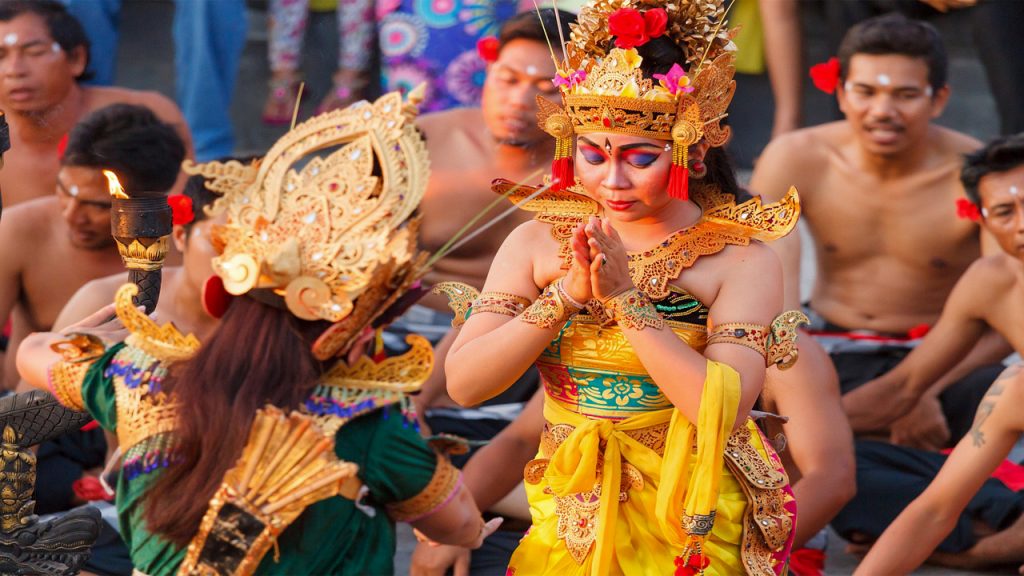
10. FAQs Regarding Visits to Indonesia
1. When would be best to travel to Indonesia?
Depending on your hobbies and favorite activities, there are several times of year to visit Indonesia. In general, sunny-weathered outdoor experiences, beach vacations, and seeing cultural sites are best enjoyed during the dry season, which runs from April to October.
Despite sporadic downpours, the rainy season, which runs from November to March, provides beautiful scenery, fewer tourists, and distinctive cultural experiences. The shoulder seasons, which fall between March and April and October and November, offer a balance between mild weather and fewer people.
2. I want to go to Indonesia; do I need a visa?
Most travelers visiting Indonesia can get a 30-day visa on arrival (VOA), which can be renewed once for an extra 30-day period. Nevertheless, different nationalities have different visa requirements, so it’s best to confirm with the Indonesian embassy or consulate in your nation before leaving. Make sure the validity of your passport is at least six months after the date of arrival.
3. Which Indonesian locations are a must-see?
There are many must-see locations in Indonesia that appeal to a variety of interests:
Bali is well-known for its breathtaking beaches, lively culture, and historic temples like Uluwatu and Tanah Lot.
- Yogyakarta is the city of rich Javanese customs and culture and is home to the UNESCO-listed Borobudur and Prambanan temples.
- Komodo National Park is well-known for its amazing marine biodiversity and Komodo dragons.
- Raja Ampat is a haven of immaculate coral reefs and aquatic life, perfect for snorkelers and divers.
- Bali’s Ubud cultural center features verdant rice terraces, galleries, and traditional performances.
4. What should I bring on my Indonesian vacation?
Bring swimwear, sunscreen, insect repellent, and light, breathable clothing that is appropriate for tropical weather, along with cozy walking shoes. Bring an umbrella or rain jacket, as well as waterproof tech for your electronics, during the rainy season. When visiting temples, observe local norms by wearing modest apparel, such as knee and shoulder coverings.
5. Is traveling in Indonesia safe?
Although travel to Indonesia is typically secure, it is still important to use prudence and common sense when choosing any trip. Keep an eye out for your possessions in busy locations, stay away from remote areas after dark, and familiarize yourself with local laws and customs. Natural calamities like earthquakes and volcanic eruptions might happen, so pay attention to travel advisories and heed the local authorities’ instructions.
Learn More

